Emerging Biomarker: The Versatile GDF-15

Growth Differentiation Factor-15 (GDF-15), also known as Macrophage Inhibitory Cytokine-1 (MIC-1), belongs to the Transforming Growth Factor-β (TGF-β) superfamily. It is a 25 kDa homodimeric secreted protein, with its two chains linked by disulfide bonds.
As a stress-induced cytokine, GDF-15 exhibits complex tissue-specific regulation and is modulated by various inflammation- or stress-related proteins (e.g., IL-1β, IL-2, TNF-α, MCSF-1). Under normal physiological conditions, circulating levels of GDF-15 range between 200-1200 pg/ml. However, its expression can be induced during stress or pathological conditions such as renal failure, chronic liver disease, and cancer, where it helps maintain cellular and tissue homeostasis, acting as an endocrine protective factor.
GDF-15 is primarily expressed in the placenta and prostate, with low levels observed in the heart, kidneys, liver, and pancreas. It serves as a biomarker for cardiovascular function (e.g., acute coronary syndrome, myocardial infarction, heart failure), obesity, and inflammation.
The Versatile GDF-15
GDF-15 is a promising prognostic biomarker and one of the most prominently overexpressed soluble factors in various cancer types, including breast, colon, and pancreatic cancers. Its expression is significantly elevated in these tissues. GDF-15 has been identified as a potential marker for distinguishing pancreatic cancer from chronic pancreatitis and prostate cancer from benign hyperplasia. In esophageal cancer, elevated GDF-15 levels are positively correlated with tumor invasion (p = 0.030), lymph node metastasis (p = 0.007), shorter recurrence-free survival (p = 0.050), and tumor-specific survival (p = 0.005). In the same cohort, GDF-15 emerged as the strongest predictive factor.
GDF-15 also reflects tumor burden and is highly predictive of clinical outcomes in multivariate analyses. Studies suggest that GDF-15 may promote tumor immune evasion by inhibiting T-cell stimulation and dendritic cell activation of cytotoxic T lymphocytes.
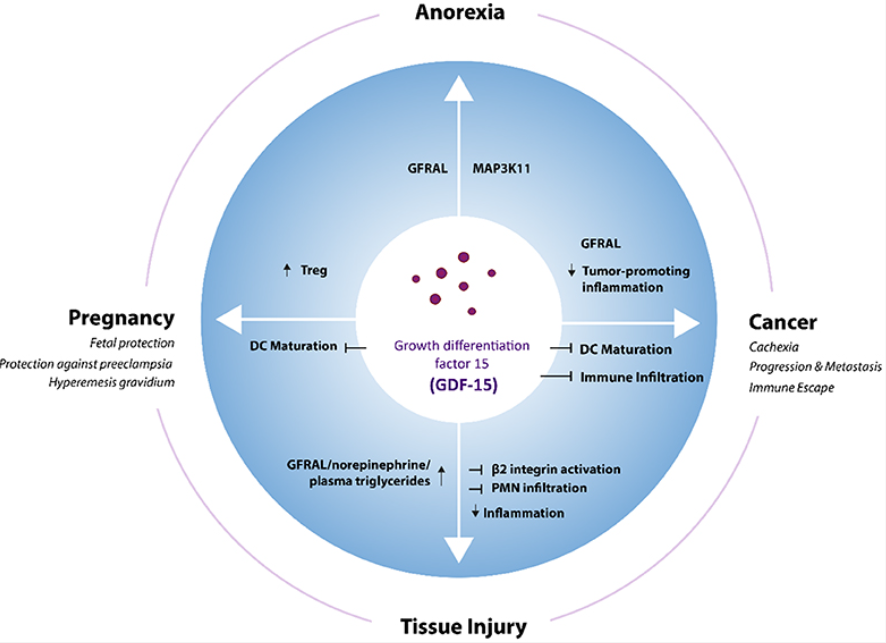
Figure 1: Roles of GDF-15 in Various Physiological/Pathological Conditions
Obesity-Related Biomarker
GDF-15 is referred to as the "anorexigenic hormone." GFRAL, the sole receptor for GDF-15, belongs to the glial cell line-derived neurotrophic factor (GDNF) family of α-like receptors. GDF-15 and GFRAL are potential drug targets for regulating body weight and energy expenditure. Full-length GFRAL is primarily found in neurons of the hindbrain, specifically the area postrema and nucleus tractus solitarius, and plays a crucial role in reducing food intake and body weight. Multiple studies have shown a direct correlation between serum GDF-15 levels and anorexia/cachexia.
GDF-15 binds to GFRAL, recruiting the receptor tyrosine kinase RET in the hindbrain to form a heterodimeric complex, which activates intracellular signaling pathways consistent with GDNF signaling. The GDF15–GFRAL–RET signaling model projects to the parabrachial nucleus and arcuate nucleus, potentially inducing conditioned taste aversion, modulating vagosympathetic nervous system activity, delaying gastric emptying, and ultimately reducing food intake, improving blood glucose levels, and lowering body weight. In overweight/obese adolescents, plasma GDF-15 levels are associated with liver fat and may serve as a biomarker for pediatric non-alcoholic fatty liver disease.
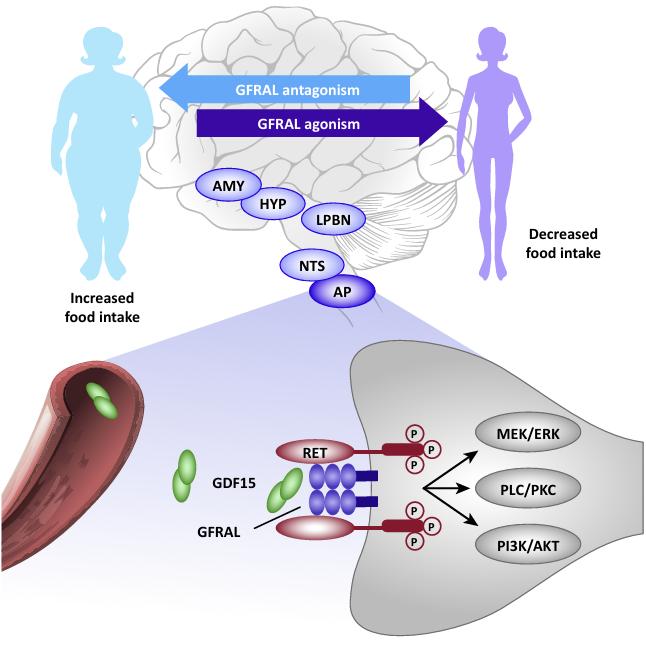
Figure 2: Mechanism of GDF-15 in Suppressing Food Intake
Cardiometabolic Disease Biomarker
GDF-15 serves as an independent inflammatory biomarker for cardiovascular function and diseases. Its levels can predict the risk of cardiovascular diseases, with positive correlations observed for diabetes, atherosclerotic cardiovascular disease, and heart failure. The Chinese Expert Consensus on Biomarkers for Heart Failure highlights GDF-15 as a potential biomarker for predicting the occurrence, diagnosis, prognosis, and treatment guidance of heart failure. GDF-15 plays a significant role in the diagnosis, treatment monitoring, and prognosis assessment of heart failure with preserved ejection fraction (HFpEF), which accounts for 50% of heart failure cases.
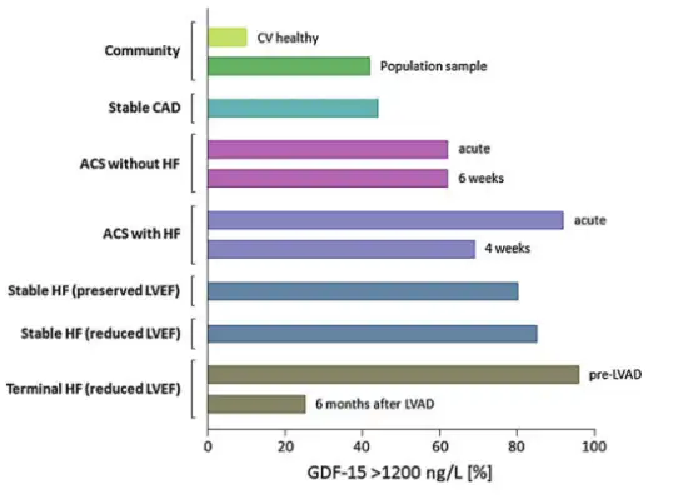
Figure 3: GDF-15 Levels Increase with the Severity of Cardiovascular Diseases. CDA: Coronary Artery Disease; HF: Heart Failure; ACS: Acute Coronary Syndrome.
In a study by Kempf involving 741 patients with ST-segment elevation myocardial infarction (STEMI), approximately 72.7% had GDF-15 levels ≥1200 ng/L. During a 1-year follow-up, elevated GDF-15 levels were associated with an increased risk of mortality. Patients with GDF-15 levels <1200, 1200-1800, and >1800 ng/L had 1-year mortality rates of 2.1%, 5.0%, and 14.0%, respectively (P<0.001), making GDF-15 an independent predictor of mortality and providing additional prognostic information. Another study involving 2081 patients with acute chest pain and ST-segment depression or elevated troponin levels, along with a matched cohort of 429 healthy individuals, found that approximately two-thirds of patients had GDF-15 levels above the normal upper limit (1200 ng/L), with one-third exceeding 1800 ng/L. GDF-15 was a strong predictor of 1-year mortality, with an optimal cutoff level of 1808 ng/L (sensitivity, 68.5%; specificity, 68.8%).
Immune Regulation
GDF-15 is also an inflammation- and stress-induced cytokine, typically upregulated during tissue injury. In animal models of sepsis, the anti-inflammatory effects of GDF-15 are significant. GDF-15 knockout mice exhibited increased inflammatory responses to lipopolysaccharide (LPS), with elevated expression of monocyte chemoattractant protein-1 (MCP-1), keratinocyte-derived chemokine (KC), IL-8, IL-6, and TNF-α in cardiac and renal tissues, ultimately leading to organ dysfunction. In contrast, wild-type and GDF-15-overexpressing mice were protected from excessive inflammation, with LPS-induced sepsis not affecting organ function.
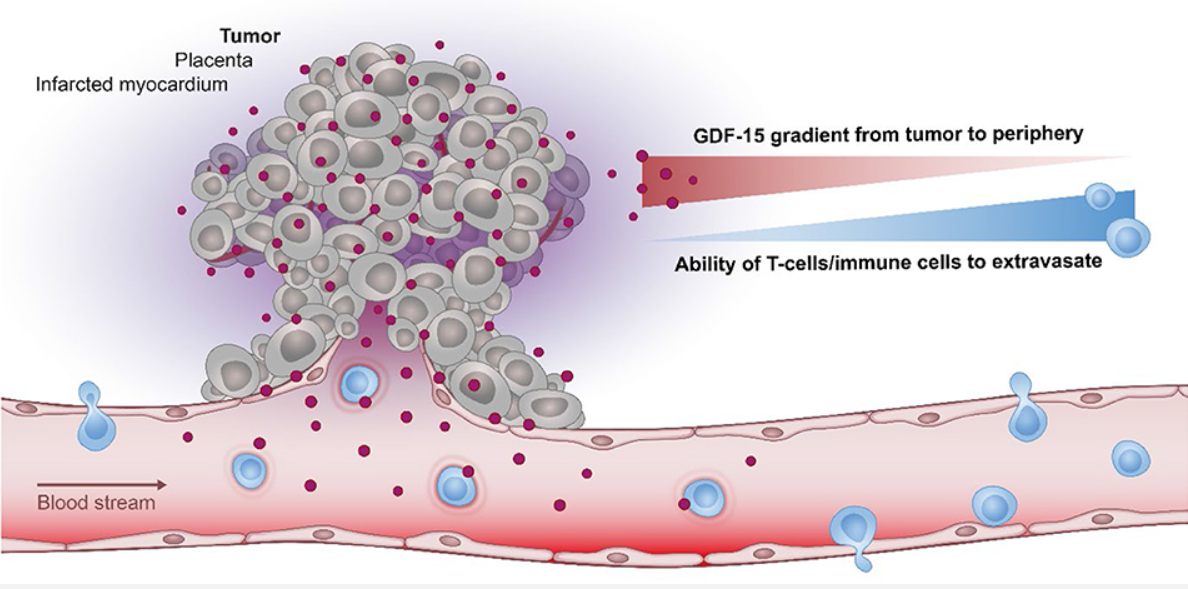
Figure 4: GDF-15 Protects Tissues from Inflammation
Targeted GDF-15 Therapies
Given its multifaceted role in various conditions, GDF-15 is being explored as a therapeutic target for multiple indications.
-
Ponsegromab: A monoclonal antibody that blocks GDF-15 binding to the GFRAL receptor, currently in Phase II clinical trials for cachexia associated with non-small cell lung cancer, pancreatic cancer, colorectal cancer, and heart failure.
-
CIN-109: A GDF-15 analog that modulates the GDF15-GFRAL pathway to regulate appetite and treat obesity, having completed a Phase I single-dose escalation study.
-
AZD8853: A GDF-15 monoclonal antibody showing promise in preclinical studies for immunotherapy-refractory tumors. In anti-PD-L1 refractory tumor models, AZD8853-treated mice exhibited significant anti-tumor activity, with Phase I clinical evaluations underway.
GDF-15 is a multifaceted therapeutic target with broad applications in health promotion and disease treatment, emerging as a hotspot in drug development. The development of GDF-15-targeted therapies offers new strategies and hope for treating a variety of diseases.
S-RMab® Monoclonal Antibodies
Starter offers highly sensitive and specific GDF-15 paired rabbit monoclonal antibodies, validated on luminescence platforms with antigen sensitivity ≤100 pg/ml and excellent antigen dilution gradients (see figure below). These antibodies provide high-quality detection reagents for cardiovascular diseases, offering accurate and reliable diagnostic tools for global patients. Welcome inquiries!
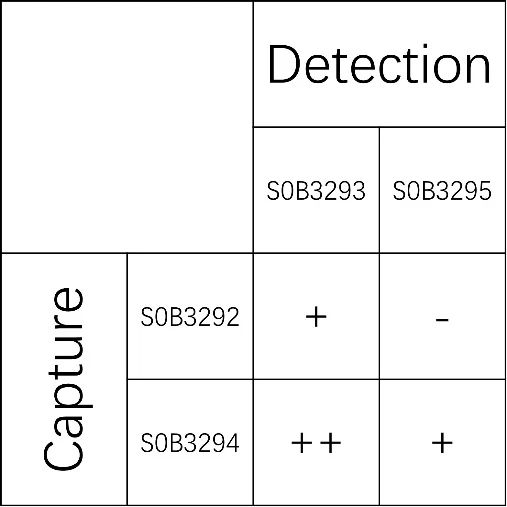
Product Information
| Gatalog Num | Product Name | Product Parameters | Price |
| S0B3295 | GDF-15 Recombinant Rabbit mAb (SDT-1012-69) | Host : Rabbit | $380 |
| Conjugation : Unconjugated | |||
| S0B3294 | GDF-15 Recombinant Rabbit mAb (SDT-1012-78) | Host : Rabbit | $380 |
| Conjugation : Unconjugated | |||
| S0B3293 | GDF-15 Recombinant Rabbit mAb (SDT-1012-55) | Host : Rabbit | $380 |
| Conjugation : Unconjugated | |||
| S0B3292 | GDF-15 Recombinant Rabbit mAb (SDT-1012-35) | Host : Rabbit | $380 |
| Conjugation : Unconjugated |




